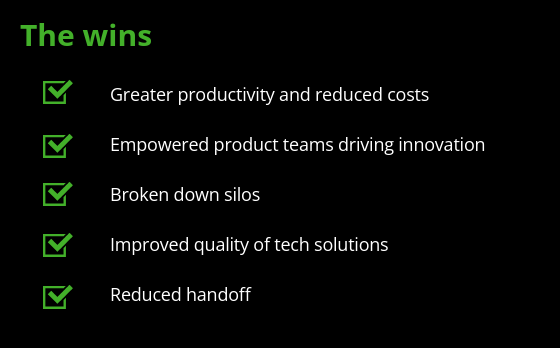Cloud case studies
The journey to public cloud for a global food distributor
Driving speed and productivity with cloud saves millions
A global food retailer and Deloitte designed and implemented a new operating model that would help deliver IT services faster—all while keeping user disruption to a minimum.

A leading global food retailer and distributor began its journey to the public cloud to integrate disparate systems, improve data management, and provide a better customer experience following a series of acquisitions. To accomplish this, the company implemented a master data management platform and migrated a large share of its workloads to a cloud solution built on Amazon Web Services (AWS)—quickly realizing significant benefits, including a 50 percent decrease in cost footprint.
But the company’s initial cloud implementation also revealed some organizational and operational challenges. Employees were not used to working across teams, and manual processes weren’t being automated fast enough to deliver on internal needs because of organizational silos. The company also found that they needed new skills to design, develop, and run cloud-based solutions.
The company realized it needed to shift to an Agile operating model that would enable collaboration between software development and operations teams, including cloud engineers, with an increased focus on automation and self-service. They asked Deloitte to help.
“The company realized it needed to shift to an Agile operating model that would enable collaboration between software development and operations teams, including cloud engineers, with an increased focus on automation and self-service.”
What happened next
Working together, the company and Deloitte designed and implemented a new operating model that would help deliver IT services faster—all while managing change to keep user disruption to a minimum. A holistic approach considered every aspect of IT and how it needed to change to support product teams, from governance to organizational design to talent and hiring practices.
The company quickly began to see the benefits of Agile as product owners were paired with cross-functional teams that included cloud engineers where needed to deliver faster and cheaper without impacting quality. Under this new model, agile product teams, such as Warehouse Management, owned all the technology that enabled their part of the value chain, including any migration to cloud and the integrated technologies. These teams were seamlessly supported by platform and services teams that drove efficiencies and reduced hand-offs through self-service automation.

For the company, cloud was a critical enabler of Agile and the move to Agile helped accelerate cloud migration. Now, more than 40 teams are using cloud services as part of their product delivery and employees across the organization have been trained to get the greatest value from the cloud. The average time to create a feature has gone from 50 days to 19 days, including new self-service capabilities by the cloud team and new business capabilities by the product teams. IT is now a trusted partner with the business teams, enabling better business outcomes.
By the numbers
$50M Savings realized year over year
Reduced average development time from 50 to 19 days
70% of main data center retired
40 teams now using cloud services



